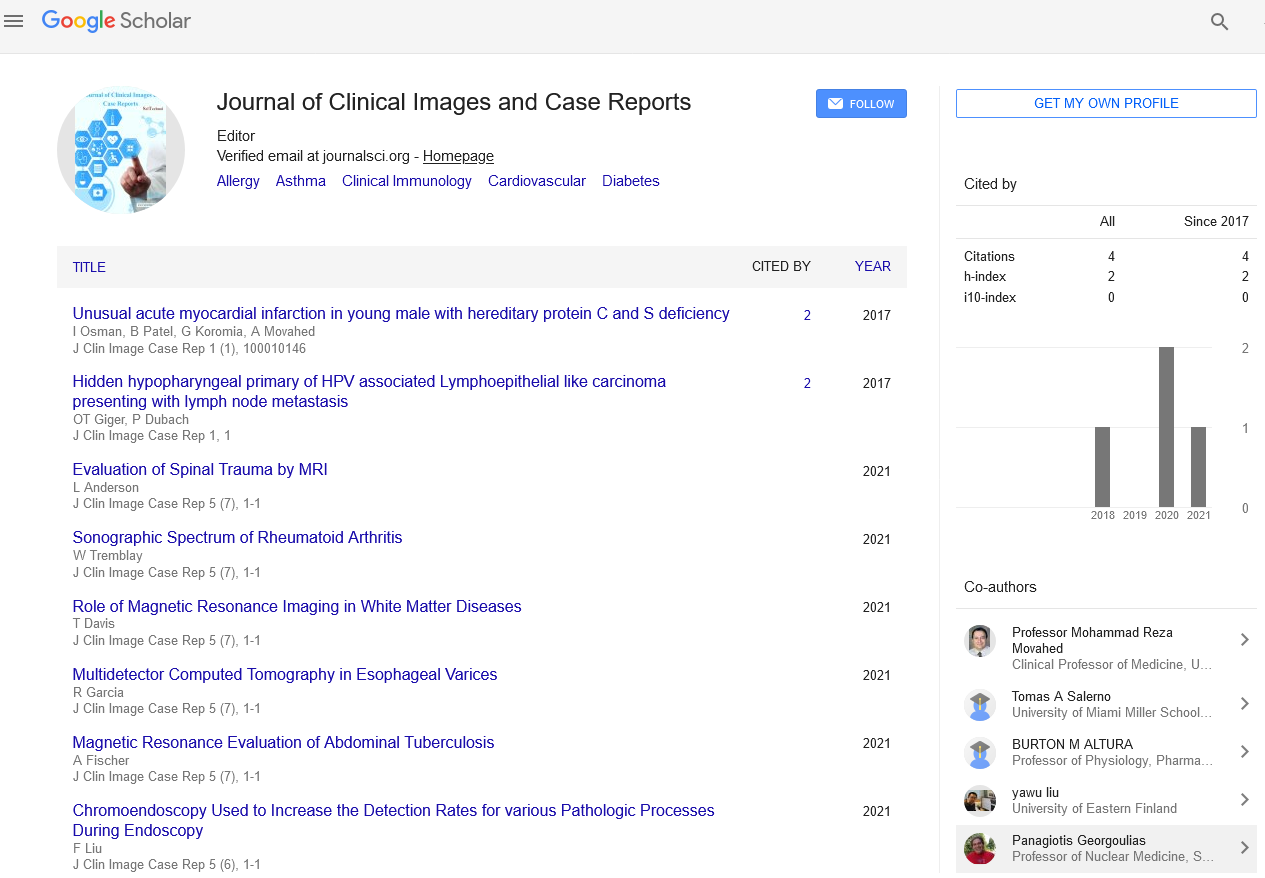Opinion Article, J Clin Image Case Rep Vol: 7 Issue: 3
Significance of Clinical Immunology and Complexities of the Immune System
Choti Jihoon*
1Department of Biomedical and Molecular Sciences, Queen’s University, Ontario, Canada
*Corresponding Author: Choti Jihoon,
Department of Biomedical and Molecular
Sciences, Queen’s University, Ontario, Canada
E-mail: jihoon.c@gmail.com
Received date: 02 June, 2023, Manuscript No. CICR-23-107540;
Editor assigned date: 05 June, 2023, PreQC No. CICR-23-107540 (PQ);
Reviewed date: 19 June, 2023, QC No. CICR-23-107540;
Revised date: 26 June, 2023, Manuscript No. CICR-23-107540 (R);
Published date: 06 July, 2023, DOI: 10.4172/CICR.1000253.
Citation: Jihoon C (2023) Significance of Clinical Immunology and Complexities of the Immune System. J Clin Image Case Rep 7:3.
Description
Clinical immunology is a specialized branch of medicine that focuses on studying the immune system and its role in health and disease. The immune system serves as a strong protective mechanism, protecting the body from infections and Invaders from other countries while maintaining tolerance to individual ability. Clinical immunologists play an important role in diagnosing and treating various immune-related disorders, as well as development of research and therapeutic approaches to enhance immune responses.
Main branches of immune system
The immune system is A complicated structure of cells, tissues, and organs working together to protect the body from harmful pathogens, such as bacteria, viruses, and parasites. It also plays an essential role in recognizing and eliminating abnormal or damaged cells, including cancerous cells.
The immune system can be divided into two main branches:
Innate immunity: It provides immediate, non-specific defense against pathogens. It includes physical barriers such as the skin and mucous membranes, as well as cells including neutrophils and macrophages that engulf and destroy invading pathogens.
Adaptive immunity: It is a more specific and tailored defense system that develops over time. It involves the production of antibodies and memory cells in response to specific pathogens, providing long-term protection against recurring infections.
Structure of immune system
White blood cells (leukocytes): Leukocytes are important components of the immune system, including neutrophils, lymphocytes (B cells and T cells), monocytes, eosinophils, and basophils. Each type of white blood cell has a distinct role in detecting and neutralizing foreign substances.
Lymphoid organs: Lymphoid organs, such as the thymus, spleen, and lymph nodes, are essential for the maturation and activation of immune cells. They facilitate the recognition and removal of pathogens from the body.
Antibodies: Antibodies, also known as immunoglobulins, are proteins produced by B cells in response to specific pathogens. They communicate to foreign invaders, marking them for destruction by other immune cells.
Complement system: It is a group of proteins that work together to enhance the immune response. It can trigger inflammation, recruit immune cells, and directly attack pathogens.
Common immune-related disorders
Clinical immunology includes with the diagnosis and treatment of various immune-related disorders that can arise due to malfunctions in the immune system. Some common immune-related disorders include:
Autoimmune diseases: It occurs when the immune system improperly attacks the body's tissues as if they are foreign invaders. Examples include rheumatoid arthritis, Systemic Lupus Erythematosus (SLE), and multiple sclerosis.
Allergies: Allergies result from an exaggerated immune response to harmless substances, such as pollen, pet dander, or certain foods. Allergic reactions can range from mild to severe, including anaphylaxis.
Immunodeficiency disorders: Immunodeficiency disorders result in an immune system that is compromised, causing individuals more susceptible to infections. Primary immunodeficiency disorders are typically genetic, while secondary immunodeficiencies can result from other medical conditions or treatments.
Diagnostic methods in clinical immunology
Clinical immunologists employ various diagnostic methods to assess the function of the immune system and identify immune-related disorders. Some common diagnostic techniques include:
Blood tests: Blood tests can measure the levels of different immune cells, antibodies, and complement proteins, providing insights into the overall immune status.
Skin tests: Skin tests, such as the tuberculin skin test or allergy skin tests, are used to assess the immune response to specific antigens and allergens.
Immunophenotyping: It involves the analysis of cell surface markers on immune cells, helping to identify and classify different cell types involved in the immune response.
Serological tests: Serological tests detect the presence of specific antibodies in the blood, helping in the diagnosis of infectious diseases and autoimmune disorders.
Transplant rejection
When the immune system recognizes an organ or tissue transplant as foreign, it may initiate an immune response to reject the transplant. Immunosuppressive drugs are frequently used to prevent rejection in transplant recipients.
 Spanish
Spanish  Chinese
Chinese  Russian
Russian  German
German  French
French  Japanese
Japanese  Portuguese
Portuguese  Hindi
Hindi 